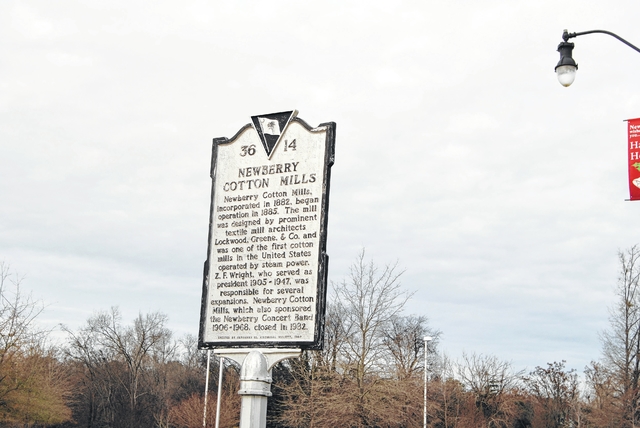
NEWBERRY — At one point in time, Newberry Cotton Mills was an anchor in Downtown Newberry and one could not go downtown without seeing the mill, according to local historian Ernest Shealy.
“The Newberry Cotton Mills was one of three in town, certainly the most expensive. It had a complete and separate village with its own churches, schools, cemetery, parks and rows and rows of identical houses,” he said.
Newberry Cotton Mills was located on the corner of Main and Tarrant streets. The mill community was located in what is now Drayton Street, parts of Main Street and down toward Willowbrook Park.
“If you live in that area today, you can know if you are living in a mill house if it looks like the one next door, and the house next to it,” Shealy said. “The had two to three floor plans and they kept the same design when they built the homes.”
Not all the homes in the community were the same, however. Those in upper management had different homes. For instance the supervisors/managers often lived in houses looking over the reservoir, and their houses were built long before the mills.
“The McWhirter House was built before the mill. The mill bought the property and remodeled it for the supervisor,” Shealy said.
Those who worked and lived in the mill village had their own community. They had a baseball team and a concert band, which was sponsored by the mill. The band would play at functions and was an existence from 1906-1968.
The community also had their own ghost story. According to Shealy, the Bride of West End Cemetery, located behind the middle school, was jilted at the altar and can be seeing waiting for her lover.
“The mills were a very important part of life. It was an enclosed economy. They grew cotton, it then went to the mills and the profit went into the town. Dealing with the cotton gave Newberry the big 20th century homes,” Shealy said. “Newberry Cotton Mills was definitely a family oriented business. Several generations worked there from the time it opened to the time it closed.”
Around the 1950s, the mills stopped owning houses and began to sell them. Shealy said it was a sign in the changing times, and the Newberry city limits expanded in the direction of Newberry Cotton Mills.
The mill closed down in 1982 due to a decline in the demand for cotton. The mill was also being out sold to other markets and cotton was not being grown in Newberry anymore. In the 1990s, Newberry Cotton Mills was torn down, right before Downtown Newberry was getting developed.
“There was no use for a building that size. It was a good sized building that took up the block, it was bigger than Oakland Mills,” Shealy said. “It was one of those building that had it lasted a little while longer, it could have been used.”
A historic marker for the Newberry Cotton was erected in 1997 by the Newberry County Historical Society. The text on the marker states: The Newberry Cotton Mills, incorporated in 1882, began operation in 1885. The mill was designed by prominent textile mill architects Lockwood, Greene, & Co. and was one of the first cotton mills in the United States operated by steam power. Z. F. Wright, who served as president 1905-1947, was responsible for several expansions. Newberry Cotton Mills, which also sponsored the Newberry Concert Band 1906-1968, closed in 1982.
